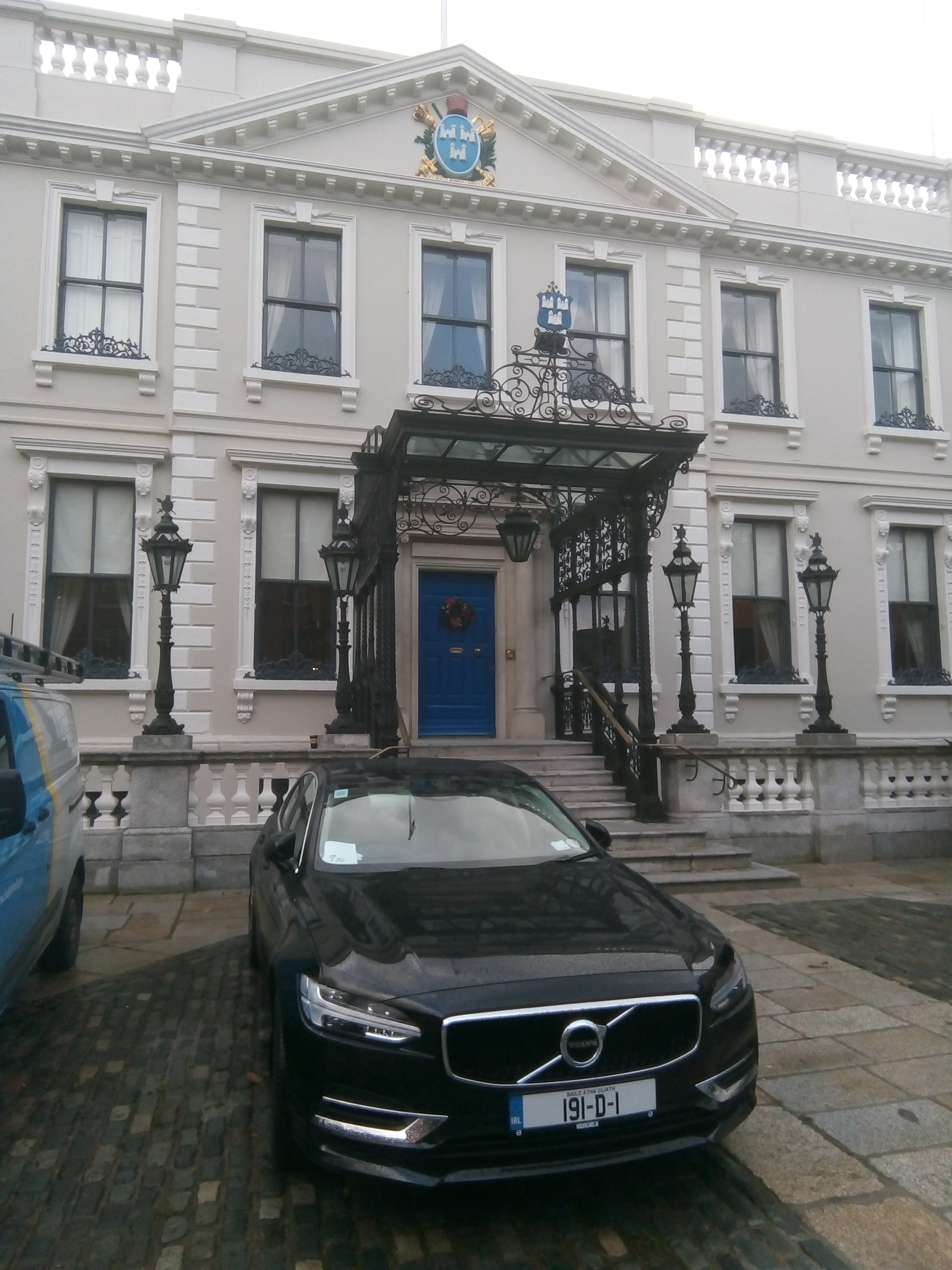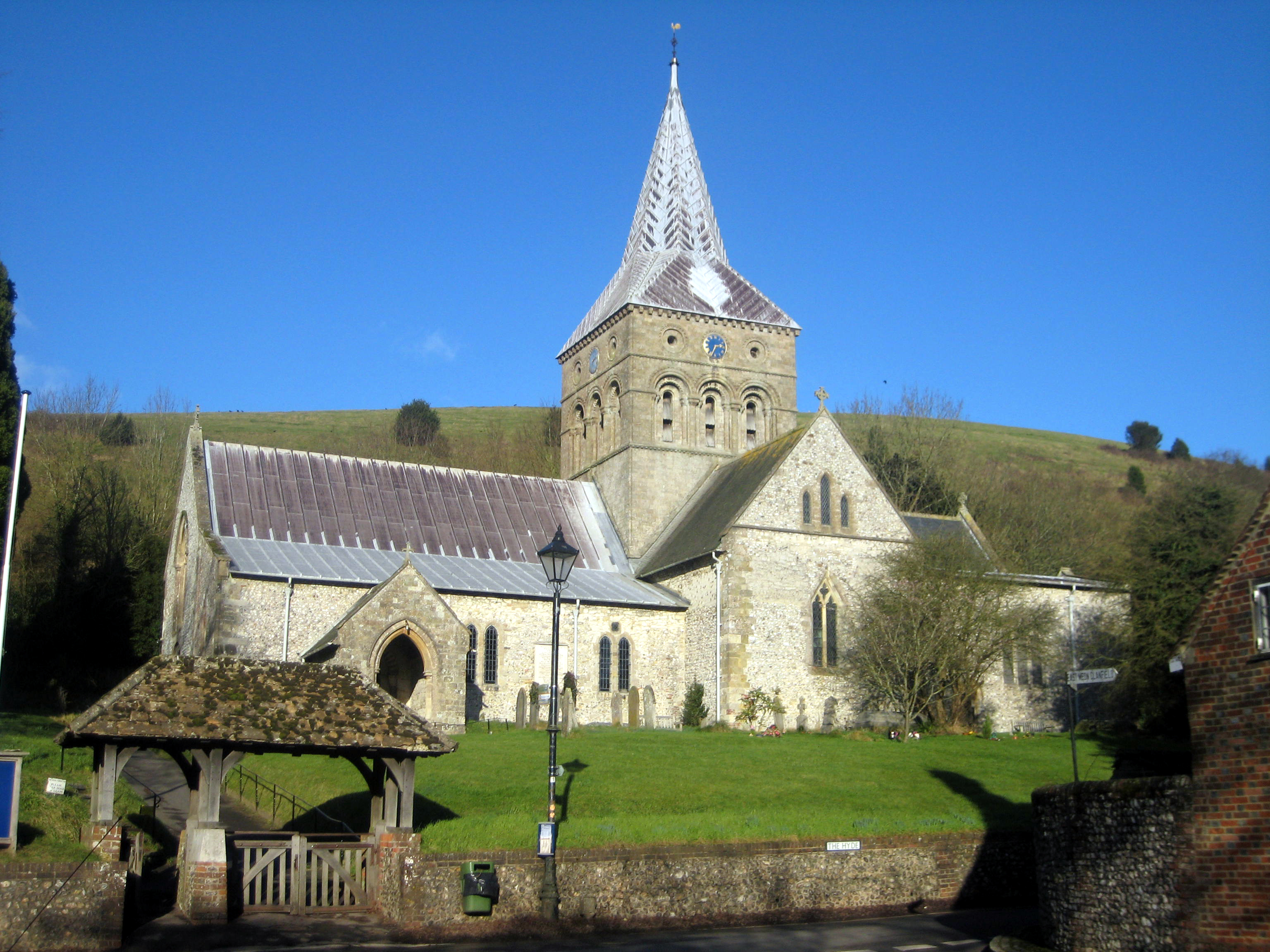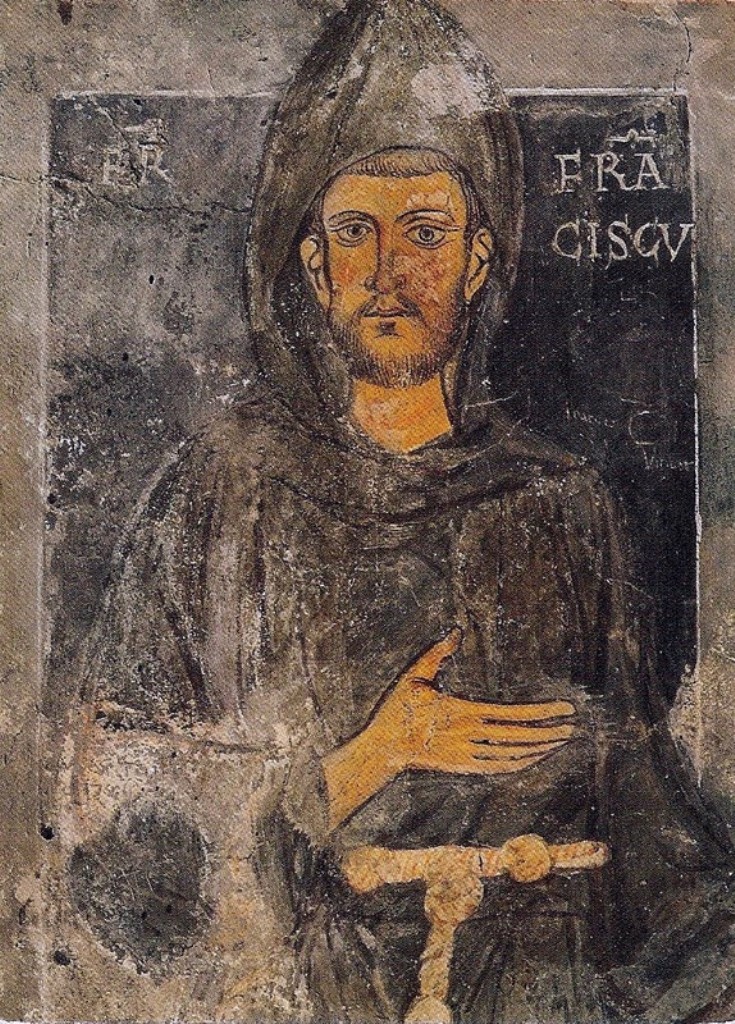|
John Le Decer
John Le Decer (died 1332) was a fourteenth-century Mayor of Dublin, who had a notable record of charitable works and civic improvement. Since the surname is not a common one, it is possible that Robert le Decer, Sheriff of Dublin City in 1280, was a relative of John. John Le Decer served as mayor on six occasions, in 1302, 1305, from 1307 to 1309 and in 1324. He was a man of considerable wealth, and carried out a number of noted public works "at his own expense". His most striking project was the marble cistern he built in 1308. This held Dublin's main water conduit in Cornmarket, adjacent to St. Audoen's Church in the centre of the medieval city, a work "such as was never seen here before". It was commonly called "Le Decer's Fountain", and is so described on the 1400 map of St. Audoen's Church and parish. He set up Dublin's so-called "Lucky Stone" (a ninth-century grave marker) there, reputedly so that everyone who drank from the cistern should have good luck; it had previo ... [...More Info...] [...Related Items...] OR: [Wikipedia] [Google] [Baidu] |
Mayor Of Dublin
The Lord Mayor of Dublin ( ga, Ardmhéara Bhaile Átha Cliath) is the honorary title of the chairperson ( ga, Cathaoirleach, links=no ) of Dublin City Council which is the local government body for the city of Dublin, the capital of Ireland. The incumbent, since June 2022, is councillor Caroline Conroy. The office holder is elected annually by the members of the Council. Background The office of Mayor of Dublin was created in June 1229 by Henry III. The office of ''Mayor'' was elevated to '' Lord Mayor'' in 1665 by Charles II, and as part of this process received the honorific The Right Honourable (''The Rt Hon.''). Lord mayors were ''ex-officio'' members of the Privy Council of Ireland, which also entitled them to be addressed as The Right Honourable. Though the Privy Council was ''de facto'' abolished in 1922, the Lord Mayor continued to be entitled to be addressed as The Right Honourable as a result of the Municipal Corporations (Ireland) Act 1840, which granted the title ... [...More Info...] [...Related Items...] OR: [Wikipedia] [Google] [Baidu] |
Great Famine Of 1315–1317
The Great Famine of 1315–1317 (occasionally dated 1315–1322) was the first of a series of large-scale crises that struck Europe early in the 14th century. Most of Europe (extending east to Russia and south to Italy) was affected. The famine caused many deaths over an extended number of years and marked a clear end to the period of growth and prosperity from the 11th to the 13th centuries. The Great Famine started with bad weather in spring 1315. Crop failures lasted through 1316 until the summer harvest in 1317, and Europe did not fully recover until 1322. Crop failures were not the only problem; cattle disease caused sheep and cattle numbers to fall as much as 80%. The period was marked by extreme levels of crime, disease, mass death, and even cannibalism and infanticide. The crisis had consequences for the Church, state, European society, and for future calamities to follow in the 14th century. Background Famines were familiar occurrences in medieval Europe. For exampl ... [...More Info...] [...Related Items...] OR: [Wikipedia] [Google] [Baidu] |
Lord Mayors Of Dublin
The Lord Mayor of Dublin ( ga, Ardmhéara Bhaile Átha Cliath) is the honorary title of the chairperson ( ga, Cathaoirleach, links=no ) of Dublin City Council which is the local government body for the city of Dublin, the capital of Ireland. The incumbent, since June 2022, is councillor Caroline Conroy. The office holder is elected annually by the members of the Council. Background The office of Mayor of Dublin was created in June 1229 by Henry III. The office of ''Mayor'' was elevated to '' Lord Mayor'' in 1665 by Charles II, and as part of this process received the honorific The Right Honourable (''The Rt Hon.''). Lord mayors were ''ex-officio'' members of the Privy Council of Ireland, which also entitled them to be addressed as The Right Honourable. Though the Privy Council was ''de facto'' abolished in 1922, the Lord Mayor continued to be entitled to be addressed as The Right Honourable as a result of the Municipal Corporations (Ireland) Act 1840, which granted the title ... [...More Info...] [...Related Items...] OR: [Wikipedia] [Google] [Baidu] |
Rathmines
Rathmines () is an affluent inner suburb on the Southside of Dublin in Ireland. It lies three kilometres south of the city centre. It begins at the southern side of the Grand Canal and stretches along the Rathmines Road as far as Rathgar to the south, Ranelagh to the east, and Harold's Cross to the west. It is situated in the city's D06 postal district. Rathmines is a commercial and social hub and is well known across Ireland as "flatland"—an area that has provided rented accommodation to newly arrived junior civil servants and third-level students from outside the city since the 1930s. In more recent times, Rathmines has diversified its housing stock and many houses have been gentrified. Rathmines gained a reputation as a "Dublin Belgravia" in the 19th Century. Name Rathmines is an Anglicisation of the Irish , meaning "ringfort of Maonas"/"fort of Maonas". The name Maonas is perhaps derived from Maoghnes or the Norman name de Meones, after the de Meones family who se ... [...More Info...] [...Related Items...] OR: [Wikipedia] [Google] [Baidu] |
De Meones Family
The De Meones, or de Moenes family were an Anglo-Irish family who originated at East Meon in Hampshire. They moved to Ireland in the late thirteenth century, became substantial landowners in Dublin and Meath, and gave their name to the suburb of Rathmines. Foundations The family originally came from the village of East Meon in Hampshire. William de Meones, the first family member of note to live in Ireland, came from England in 1279–80 as a clerk in the entourage of John de Derlington, Archbishop of Dublin.Ball, F. Elrington ''The Judges in Ireland 1221–1921'' John Murray London 1926 Vol.1 pp.58, 88 He acted as the Archbishop's executor following his death in 1284, and in that capacity he defended a lawsuit brought by Thomas de Chaddesworth, Dean of St Patrick's Cathedral, for expenses allegedly due to him.Monck, William Mason "''The History and Antiquities of the Collegiate and Cathedral Church of St Patrick near Dublin"'' Dublin 1820 p.113 He became Chief Baron o ... [...More Info...] [...Related Items...] OR: [Wikipedia] [Google] [Baidu] |
Anglo-Irish
Anglo-Irish people () denotes an ethnic, social and religious grouping who are mostly the descendants and successors of the English Protestant Ascendancy in Ireland. They mostly belong to the Anglican Church of Ireland, which was the established church of Ireland until 1871, or to a lesser extent one of the English dissenting churches, such as the Methodist church, though some were Roman Catholics. They often defined themselves as simply "British", and less frequently "Anglo-Irish", "Irish" or "English". Many became eminent as administrators in the British Empire and as senior army and naval officers since Kingdom of England and Great Britain were in a real union with the Kingdom of Ireland until 1800, before politically uniting into the United Kingdom of Great Britain and Ireland) for over a century. The term is not usually applied to Presbyterians in the province of Ulster, whose ancestry is mostly Lowland Scottish, rather than English or Irish, and who are sometim ... [...More Info...] [...Related Items...] OR: [Wikipedia] [Google] [Baidu] |
Franciscan
, image = FrancescoCoA PioM.svg , image_size = 200px , caption = A cross, Christ's arm and Saint Francis's arm, a universal symbol of the Franciscans , abbreviation = OFM , predecessor = , merged = , formation = , founder = Francis of Assisi , founding_location = , extinction = , merger = , type = Mendicant Order of Pontifical Right for men , status = , purpose = , headquarters = Via S. Maria Mediatrice 25, 00165 Rome, Italy , location = , coords = , region = , services = , membership = 12,476 members (8,512 priests) as of 2020 , language = , sec_gen = , leader_title = Motto , leader_name = ''Pax et bonum'' ''Peace and llgood'' , leader_title2 = Minister General , leader_name2 = ... [...More Info...] [...Related Items...] OR: [Wikipedia] [Google] [Baidu] |
Monastery
A monastery is a building or complex of buildings comprising the domestic quarters and workplaces of monastics, monks or nuns, whether living in communities or alone ( hermits). A monastery generally includes a place reserved for prayer which may be a chapel, church, or temple, and may also serve as an oratory, or in the case of communities anything from a single building housing only one senior and two or three junior monks or nuns, to vast complexes and estates housing tens or hundreds. A monastery complex typically comprises a number of buildings which include a church, dormitory, cloister, refectory, library, balneary and infirmary, and outlying granges. Depending on the location, the monastic order and the occupation of its inhabitants, the complex may also include a wide range of buildings that facilitate self-sufficiency and service to the community. These may include a hospice, a school, and a range of agricultural and manufacturing buildings such as a barn, a ... [...More Info...] [...Related Items...] OR: [Wikipedia] [Google] [Baidu] |
Kilmainham
Kilmainham (, meaning " St Maighneann's church") is a south inner suburb of Dublin, Ireland, south of the River Liffey and west of the city centre. It is in the city's Dublin 8 postal district. The area was once known as Kilmanum. History In the Viking era, the monastery was home to the first Norse base (''longphort'') in Ireland. The Kilmainham Brooch, a late 8th- or early 9th-century Celtic brooch of the "penannular" type (i.e. its ring does not fully close or is incomplete) was unearthed in an 18th-century excavation of a Viking burial place in Kilmainham, In the 12th century, the lands on the banks of the Liffey were granted to the Knights Hospitaller. Strongbow erected for them a castle about 2 kilometres or 1 mile distant from the Danish wall of old Dublin; and Hugh Tyrrel, first Baron Castleknock, granted them part of the lands which now form the Phoenix Park. The Knights of St. John of Jerusalem remained in possession of the land until the dissolution of the monas ... [...More Info...] [...Related Items...] OR: [Wikipedia] [Google] [Baidu] |
Priory
A priory is a monastery of men or women under religious vows that is headed by a prior or prioress. Priories may be houses of mendicant friars or nuns (such as the Dominicans, Augustinians, Franciscans, and Carmelites), or monasteries of monks or nuns (as with the Benedictines). Houses of canons regular and canonesses regular also use this term, the alternative being "canonry". In pre-Reformation England, if an abbey church was raised to cathedral status, the abbey became a cathedral priory. The bishop, in effect, took the place of the abbot, and the monastery itself was headed by a prior. History Priories first came to existence as subsidiaries to the Abbey of Cluny. Many new houses were formed that were all subservient to the abbey of Cluny and called Priories. As such, the priory came to represent the Benedictine ideals espoused by the Cluniac reforms as smaller, lesser houses of Benedictines of Cluny. There were likewise many conventual priories in Germany and It ... [...More Info...] [...Related Items...] OR: [Wikipedia] [Google] [Baidu] |
Chapel
A chapel is a Christian place of prayer and worship that is usually relatively small. The term has several meanings. Firstly, smaller spaces inside a church that have their own altar are often called chapels; the Lady chapel is a common type of these. Secondly, a chapel is a place of worship, sometimes non-denominational, that is part of a building or complex with some other main purpose, such as a school, college, hospital, palace or large aristocratic house, castle, barracks, prison, funeral home, cemetery, airport, or a military or commercial ship. Thirdly, chapels are small places of worship, built as satellite sites by a church or monastery, for example in remote areas; these are often called a chapel of ease. A feature of all these types is that often no clergy were permanently resident or specifically attached to the chapel. Finally, for historical reasons, ''chapel'' is also often the term used by independent or nonconformist denominations for their places of wor ... [...More Info...] [...Related Items...] OR: [Wikipedia] [Google] [Baidu] |
Richard Gough (antiquarian)
Richard Gough (21 October 1735 – 20 February 1809) was a prominent and influential English antiquarian. He served as director of the Society of Antiquaries of London from 1771 to 1791; published a major work on English church monuments; and translated and edited a new edition of William Camden's ''Britannia''. He is not to be confused with the Richard Gough who wrote a "History of Myddle", Shropshire, in 1700. Life Gough was born in London, where his father, Harry Gough, was a prosperous director of the British East India Company and also a member of parliament. In 1751 he entered Corpus Christi College, Cambridge, where he began his work on British topography, eventually published in 1768. Leaving Cambridge in 1756, without a degree, he began a series of antiquarian excursions in various parts of Great Britain. Gough was elected a Fellow of the Society of Antiquaries of London in 1767, and was its director from 1771 to 1791. As director, he urged the Society to increase th ... [...More Info...] [...Related Items...] OR: [Wikipedia] [Google] [Baidu] |


.jpg)
.jpg)




